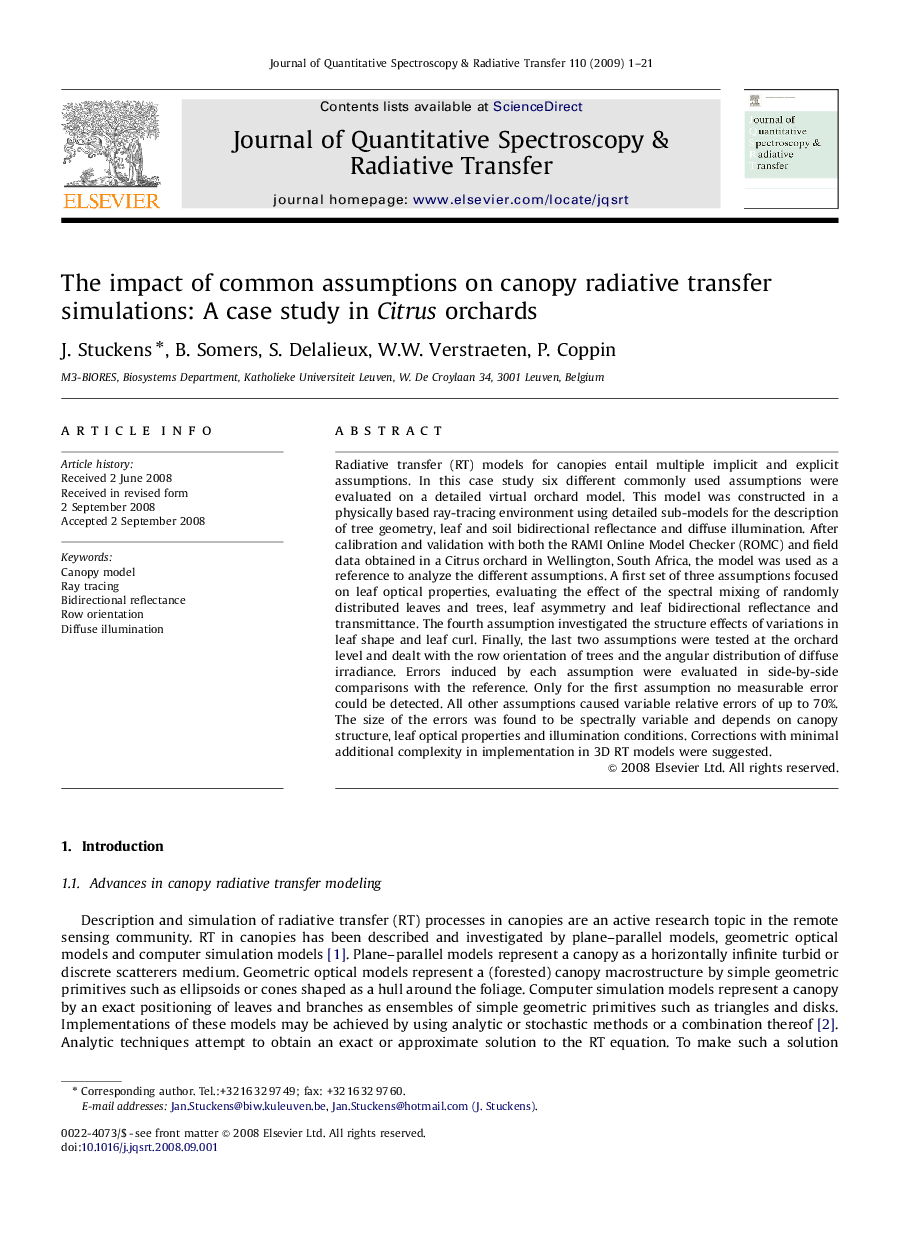| Article ID | Journal | Published Year | Pages | File Type |
|---|---|---|---|---|
| 5430259 | Journal of Quantitative Spectroscopy and Radiative Transfer | 2009 | 21 Pages |
Radiative transfer (RT) models for canopies entail multiple implicit and explicit assumptions. In this case study six different commonly used assumptions were evaluated on a detailed virtual orchard model. This model was constructed in a physically based ray-tracing environment using detailed sub-models for the description of tree geometry, leaf and soil bidirectional reflectance and diffuse illumination. After calibration and validation with both the RAMI Online Model Checker (ROMC) and field data obtained in a Citrus orchard in Wellington, South Africa, the model was used as a reference to analyze the different assumptions. A first set of three assumptions focused on leaf optical properties, evaluating the effect of the spectral mixing of randomly distributed leaves and trees, leaf asymmetry and leaf bidirectional reflectance and transmittance. The fourth assumption investigated the structure effects of variations in leaf shape and leaf curl. Finally, the last two assumptions were tested at the orchard level and dealt with the row orientation of trees and the angular distribution of diffuse irradiance. Errors induced by each assumption were evaluated in side-by-side comparisons with the reference. Only for the first assumption no measurable error could be detected. All other assumptions caused variable relative errors of up to 70%. The size of the errors was found to be spectrally variable and depends on canopy structure, leaf optical properties and illumination conditions. Corrections with minimal additional complexity in implementation in 3D RT models were suggested.
